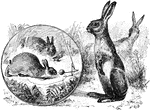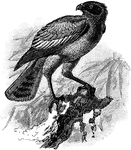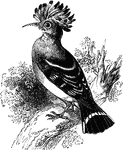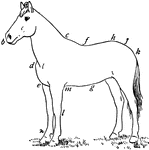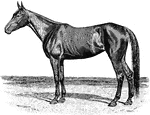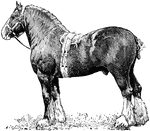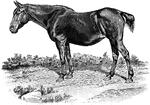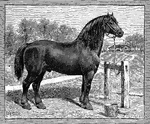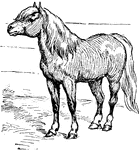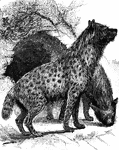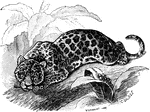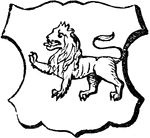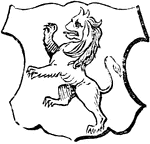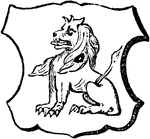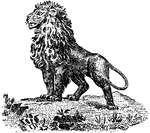
Graptolites in Stone
"Block of Stone containing Graptolites. GRAPTOLITE. A specimen or a species of Paleozoic coelenterate…
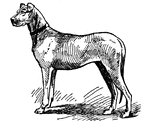
Great Dane
The Great Dane is a dog which has at different times been called the 'boar-hound', the 'German Mastiff',…
The Grey Heron
"The Grey Heron in full flight. In the heron the wings are deeply concave, and unusually large as compared…

Horse Foot
"Successive stages of modification of the feet of extinct forms of horse-like animals, showin gradual…

Horse Foot
"Successive stages of modification of the feet of extinct forms of horse-like animals, showin gradual…

Horse Foot
"Successive stages of modification of the feet of extinct forms of horse-like animals, showin gradual…
Horse Foot
"Successive stages of modification of the feet of extinct forms of horse-like animals, showin gradual…
Horse Foot
"Successive stages of modification of the feet of extinct forms of horse-like animals, showin gradual…

Trotting Horse
"Horse in the act of trotting. In this, as in all the other paces, the body of the horse is levered…
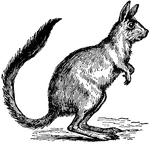
Jumping Hare
The Jumping Hare, also known as the Springhaas, is a large African jerboa (Pedetes caffer). In size,…
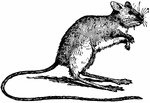
Jumping Mouse
The Jumping Mouse (Zapus hudsonius) is a N. American, jerboa-like mouse, with long hind legs, a very…
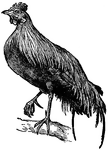
Jungle-fowl
Jungle-fowl is a general name given to the members of the genus Gallus. The red jungle-fowl, G. jerrugineus,…
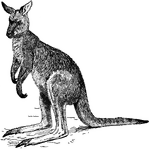
Great Kangaroo
The Great Kangaroo, or 'boomer', or 'old man' (Macropus giganteus), attains a height of about five feet…

Right Wing of Kestrel
"Right wing of the Kestrel, drawn from the specimen, while being held against the light."—Pettigrew,…
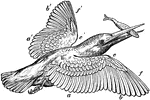
Kingfisher
"Shows the upward inclination of the body and the flexed condition of the wings in the flight of the…
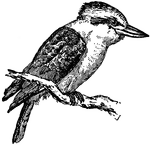
Kingfisher, Dacelo gigas
The Settler's Clock ('Dacelo gigs'), is a very large kingfisher found in Australia, where it receives…
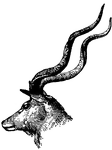
Head of Kudu
This illustration shows the head of a kudu. A kudu is a large African antelope related to the eland,…

Common Kusimanse
The Common Kusimanse (Crossarchus obscurus), also known as the Long-nosed Kusimanse, is a small, diurnal…
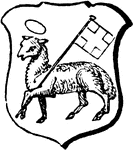
Paschal Lamb
"Argent, a lamb passant, carrying a banner charged with a cross. PASCHAL LAMB, or HOLY LAMB." -Hall,…

Langur
A langur is a monkey of the genus Semnopithicus, which contains Asiatic forms characterized by slender…

Northern Lapwing
"The Lapwing with one wing fully extended, and forming a long lever; the other being in a flexed condition…
Lion Being Hit by Palm Tree & Photographer Riding Away on a Horse
An illustration of a lion being hit by a palm tree and a photographer riding away on a horse.

Lion Couchant
"Lion couchant. COUCHANT. The French word for lying down with the breast towards the earth, and the…
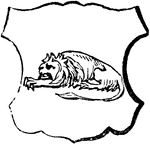
Lion Dormant
"Lion dormant. DORMANT. The French word for sleeping, used to denote the posture of a lion, or any other…
Photographer Shooting Lion in Robe
An illustration of a photographer shooting a lion dressed in a robe leaning against a rock.

Lion Rampant Double-Headed
"Lion rampant double-headed. RAMPANT. Any beast in a fighting attitude." -Hall, 1862
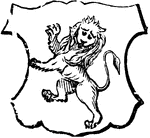
Lion Rampant Gardant
"Lion rampant gardant. RAMPANT. Any beast in a fighting attitude." GARDANT. Facing foward. -Hall, 1862
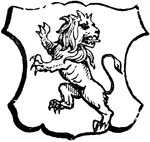
Lion Rampant Regardant
"Lion rampant regardant. RAMPANT. Any beast in a fighting attitude. REGARDANT. An animal looking towards…
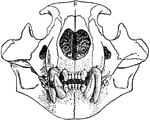
Lion Skull
"The internal structure of the lion, except in slight details, resembles that of the other Felidae,…
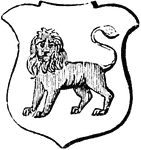
Lion Statant Gardant
"Lion statant gardant. STATANT. An animal standing still with all its legs on the ground." GARDANT.…
Lion Wearing Robe Chasing Photographer
An illustration of a lion wearing a robe and chasing a photographer.
Lion Wearing Robe Chasing Photographer
An illustration of a lion wearing a robe and chasing a photographer who created a sling shot out of…



